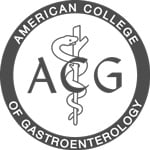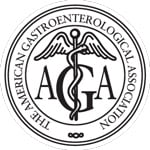Celiac disease and Helicobacter pylori (H. pylori) are two gastrointestinal conditions that present symptoms including abdominal pain, bloating, gas, and weight loss. If left untreated, both conditions can have severe consequences, so it’s important to understand these disorders, their symptoms, diagnosis, and treatments.
Celiac Disease
Approximately 2 million people in the United States and an estimated 1 percent of the global population have Celiac disease, aka celiac sprue or gluten-sensitive enteropathy. The nonprofit Celiac Disease Foundation defines this as “a serious autoimmune disease that occurs in genetically predisposed people where the ingestion of gluten leads to damage in the small intestine.” Gluten is a protein typically found in wheat, barley, and rye.
Consistent ingestion of gluten can lead to several digestive and non-digestive symptoms. Adults and children differ in their experiences. Here’s a helpful breakdown.
Adult Symptoms
- Diarrhea
- Fatigue & Headaches
- Weight Loss
- Abdominal Pain
- Nausea
- Vomiting
- Bloating & Gas
- Constipation
- Anemia
- Loss of Bone Density
- Skin Rash
- Mouth Ulcers
- Joint Pain
- Cognitive Impairment
Children Symptoms
- Nausea
- Vomiting
- Chronic Diarrhea
- Swollen Abdomen
- Constipation
- Gas
- Pale Stool
- Tooth Enamel Damage
- Weight Loss
- Anemia
- Delayed Puberty
- Attention-Deficit/Hyperactivity Disorder
- Learning Disabilities
- Headaches
Diagnosis
The following tests can be used to diagnose Celiac disease:
- Tissue Transglutaminase (TTG) Antibody
- Endomysial Antibody (EMA)
- Video Capsule Endoscopy (VCE)
- Upper Endoscopy with Biopsy
Treatment
The only treatment for Celiac disease is to follow a gluten-free diet, avoiding all foods containing wheat, barley, and rye. Patients will experience an improvement in symptoms within one to two weeks of making this adjustment.
H. Pylori
About 50 percent (3 billion) of the world’s population is infected with Helicobacter pylori. The percentage is even higher in developing countries, reaching 80 to 90 percent. H. pylori infection typically occurs in children when the H. pylori bacteria infect the stomach. This infection is the most common cause of peptic ulcers.
According to an informational outline by nonprofit academic medical center Mayo Clinic: “Most people with H. pylori infection will never have any signs or symptoms. It's not clear why this is, but some people may be born with more resistance to the harmful effects of H. pylori.”
In some cases, patients experience several signs or symptoms of the infection, including:
Symptoms
- Abdominal Pain (Burning or Aching)
- Nausea
- Loss of Appetite
- Frequent Burping
- Bloating
- Weight Loss
Patients should see a physician if abdominal pain persists, they have difficulty swallowing, or find blood in their stool or vomit.
Diagnosis
To diagnose H. pylori, physicians will use the following tests:
- Breath Test
- Stool Test
- Upper Endoscopy (Scope Test)
Treatment
To treat H. pylori infections, a doctor will usually prescribe two different antibiotics at once, in addition to an acid-suppressing drug to heal your stomach lining. Such suppressants may include proton pump inhibitors (PPIs), or bismuth subsalicylate.
Association Between Celiac Disease & H. Pylori
For many years, researchers have studied a possible relationship between Celiac disease and H. pylori. A 2013 study published in the American Journal of Epidemiology concluded that the presence of H. pylori and Celiac disease were inversely related: The more H. pylori colonization in a patient, the less risk of Celiac disease.
In 2017, a study titled “Is There Any Association Between Celiac Disease and Helicobacter pylori?” concluded: “Although the prevalence of H. pylori was lower in celiac patients compared to the control group, the difference was not statistically significant. Although no findings suggesting a correlation between CD and H. pylori was found, further studies should be conducted.”
Most recently, a 2021 systematic review of 26 studies on the association between Celiac disease and H. pylori determined the “negative association might imply a mild protective role of H. pylori against celiac disease. Although this negative association is not strong, it is statistically significant and should be further considered.”
If you think you may have Celiac disease or H. pylori infection, contact Gastroenterology Associates today. Specializing in digestive health, we are conveniently located adjacent to Long Island Center for Digestive Health (LICDH), a non-hospital outpatient facility committed to providing high-quality endoscopic and colonoscopic services. Schedule your consultation, today.
Topics: Conditions












